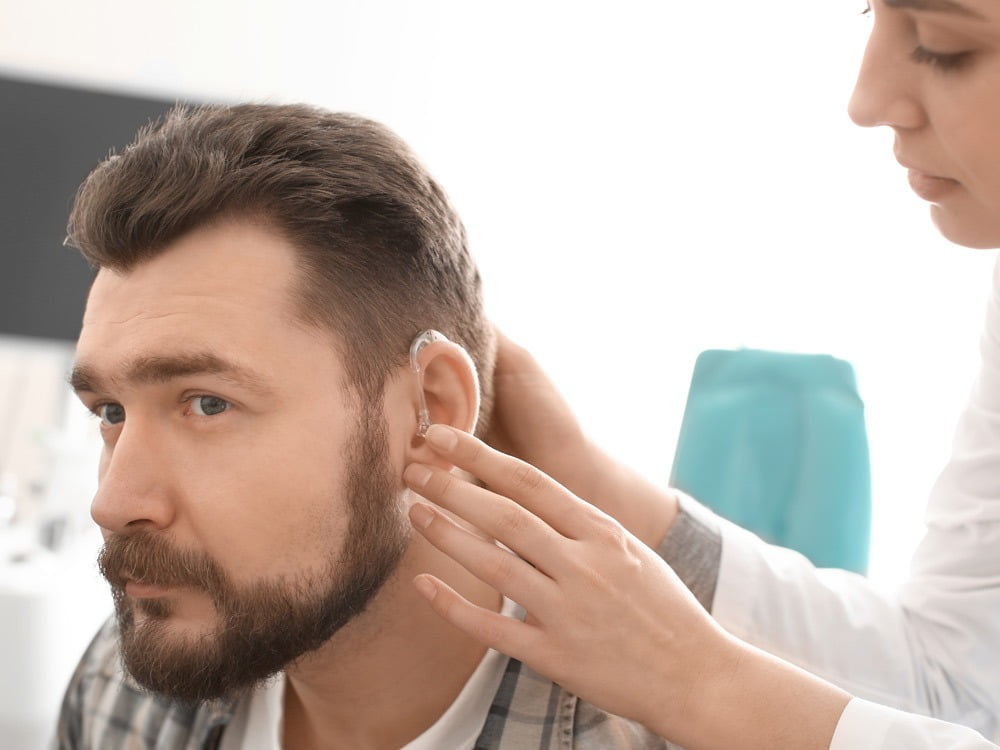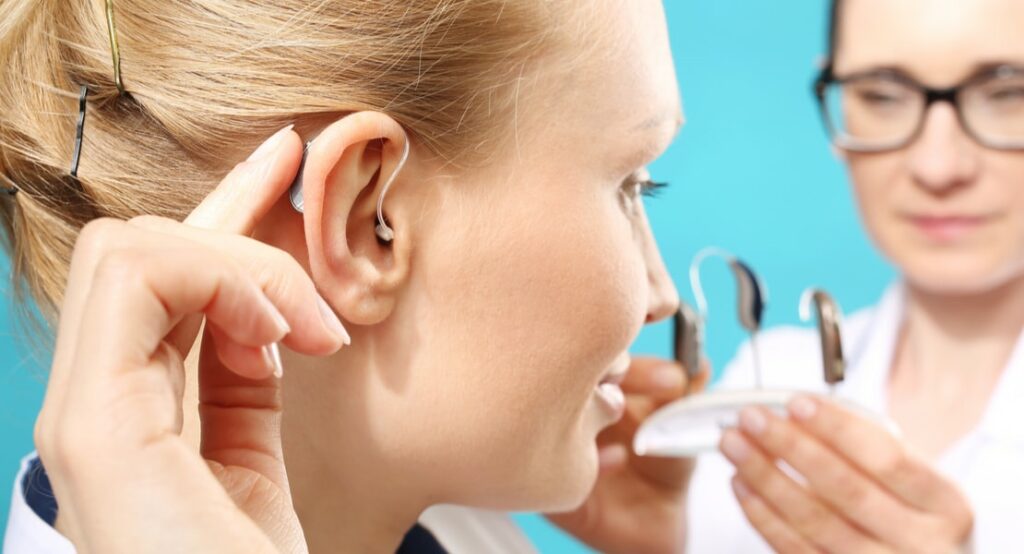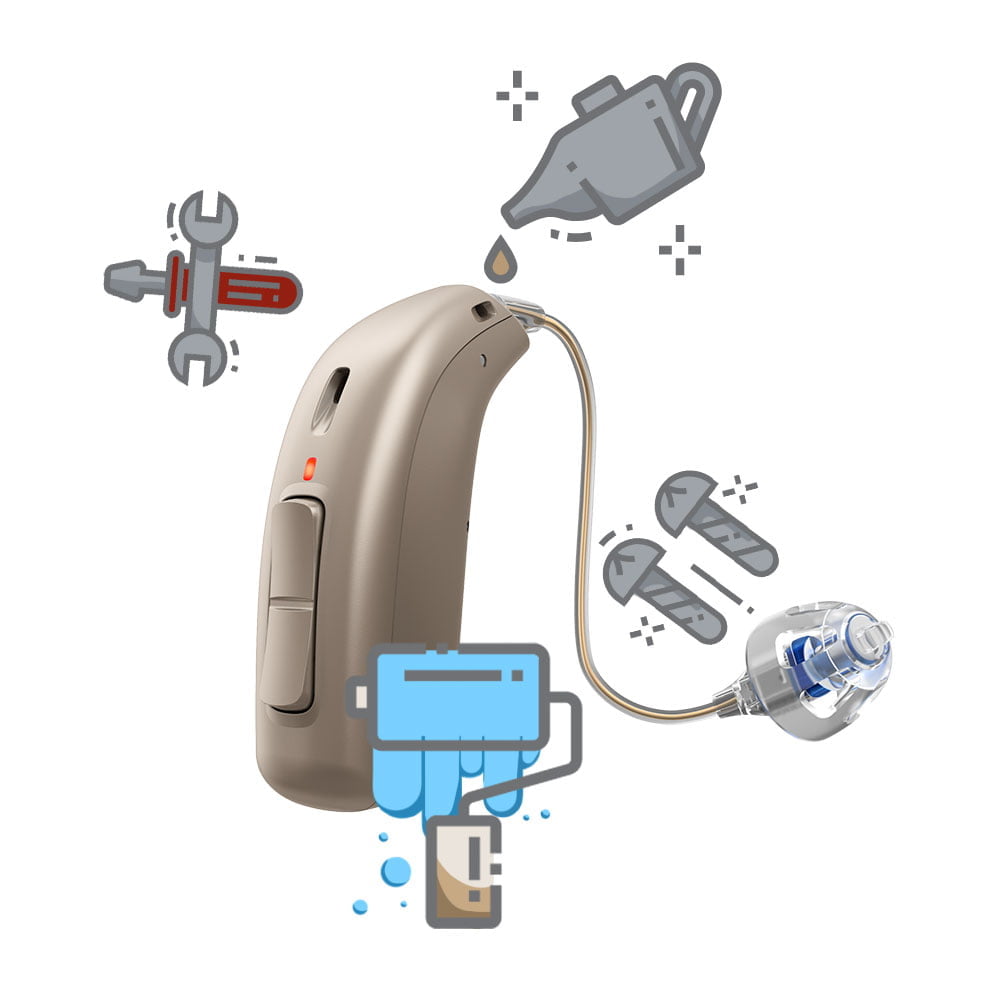Like any technology, hearing aids can develop faults and won’t always function perfectly all the time. Whether it be in the form of unpleasant whistling, batteries running low too quickly, or the devices not producing any sound at all, hearing aid wearers are likely to encounter problems from time to time.
If you rely on hearing aids, staying prepared to identify and troubleshoot common faults is crucial for clear hearing.
The Device Is Not Producing Sound
If you’re unable to hear any sound at all, the solution may be as simple as turning on your hearing aids. Some other potential steps to consider include the following:
Ensure rechargeable hearing aids are docked correctly and the charger is plugged in. If using disposable batteries, check if they need replacing and that the battery door is fully closed.
Adjust the volume control on your aids and confirm it is turned up.
Switch between custom settings in case the wrong program is selected on your hearing aids.
Assess whether your hearing aids are damaged. Did they get wet or fall? If so, a hearing care professional need to repair them.

The Sound Is Weak or Distorted
There are a few reasons as to why the sound may not be coming through as loudly as it should:
Check if disposable batteries are clean and suitable. Replace old or faulty ones immediately.
Ensure rechargeable hearing aids are docked correctly, and that the charger has enough power.
Remove earwax blocking the microphone or sound outlet. If using BTE (behind-the-ear) aids, inspect tubing for cracks or blockages.
Adjust the volume or switch to a different program. You may have accidentally changed the settings.
- Consider whether your hearing loss has worsened. Your hearing aids may need adjustment to match your current hearing ability. Booking a hearing evaluation could help.

The Hearing Aid Is Slipping out of Your Ear
Moisture inside your ear canal, as well as jaw movement during talking or chewing can cause hearing aid to shift. If your hearing aid feels uncomfortable or keeps slipping out of your ear, make sure to check:
- Hearing aid is not broken or cracked
- The device is fitted correctly
- Tubing size must be appropriate
- The dome on your device is not too small/large
If the issue continues, your hearing care professional may also need to add a retention wire.
Whistling/Feedback
Feedback is common with many types of hearing aids and is usually relatively easy to fix. It happens when the sound that was originally supposed to go into the ear canal leaves the ear and bounces back into the hearing aid microphone instead, getting reamplified and causing the device to whistle.

Below are the most common reasons as to why this might be happening:
- Our bodies don’t usually remain the same over time, and this includes our ears. Whether it be due to weight loss or some other reason, the fit of your hearing aids might have changed. To fix the issue, contact your hearing care professional to have your aids or earmolds remade.
- Turning the volume too high may cause sound leakage, leading to whistling. Lowering it might resolve the issue.
- An excessive amount of earwax could have built up inside your ear canal, causing sound to bounce off and creating feedback. If you think this might be the case, make sure to book an appointment with your hearing care professional to have the blockage removed.
- In case you wear a hearing aid style that features an earmold and tubing, make sure the tubing is properly connected to both the hearing aid and the earmold. Check for any cracks in it and see if it has become brittle or hard. If this is the case, ensure that you contact your hearing care professional to have the tubing replaced.
Wearing The Hearing Aid is Painful/Uncomfortable
If your hearing aids are quite new, getting used to them will take some time. Your hearing care provider might suggest wearing them for a few hours a day at first, and then gradually increasing your usage time.
However, if discomfort persists, there are a few possible reasons as to what could be causing it:
- You could be allergic to the material of your hearing aid.
- A poor fit could be causing the discomfort, in which case new molds of your ears would need to be taken.
- Your device might need slight re-adjustment inside your ear.
- The hearing aid could be pressing against a bump inside the ear canal, creating pressure and irritating the sensitive skin in your ear.
What to Do Next
Sometimes, you may encounter hearing aid problems you’re unable to resolve on your own. If this happens, it might be time to contact professionals who can assist you.
If you’re experiencing an issue with your hearing aid that you’ve been unable to troubleshoot, make sure to get in touch with Hear4U so that we can provide you with the support you need, whether it be a hearing test, hearing aid repair, or replacement of a component. If you have any questions, please don’t hesitate to email us at [email protected].







